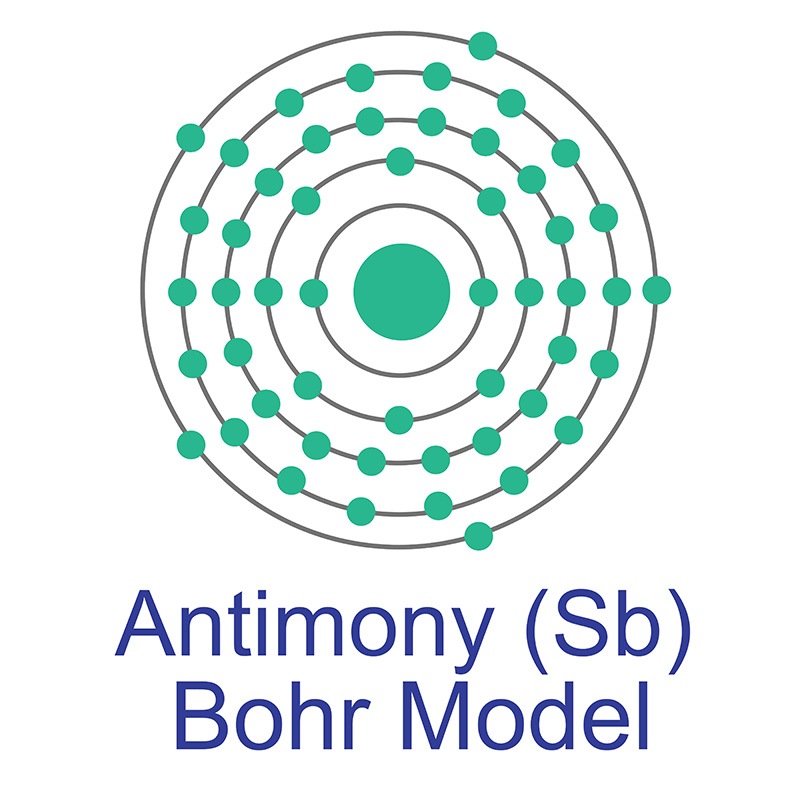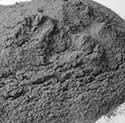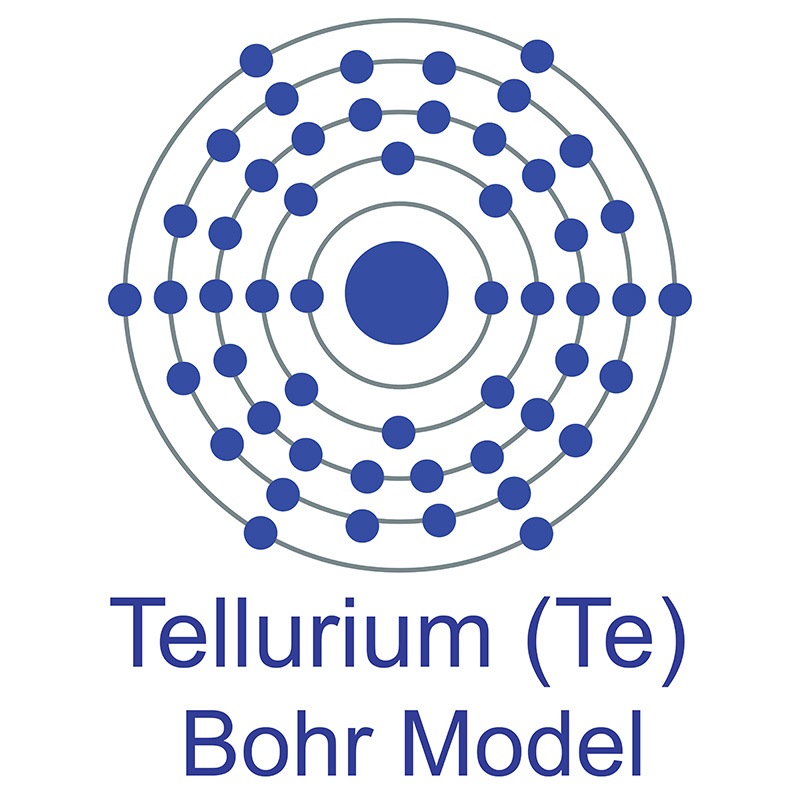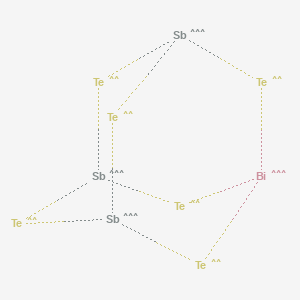SECTION 1. IDENTIFICATION
Product Name: Bismuth Antimony Telluride Powder
Product Number: All applicable American Elements product codes, e.g. BI-SBTE-02-P
, BI-SBTE-03-P
, BI-SBTE-04-P
, BI-SBTE-05-P
CAS #: 31501-07-2
Relevant identified uses of the substance: Scientific research and development
Supplier details:
American Elements
10884 Weyburn Ave.
Los Angeles, CA 90024
Tel: +1 310-208-0551
Fax: +1 310-208-0351
Emergency telephone number:
Domestic, North America: +1 800-424-9300
International: +1 703-527-3887
SECTION 2. HAZARDS IDENTIFICATION
Classification of the substance or mixture
Not a hazardous substance or mixture.
GHS Label elements, including precautionary statements
Not a hazardous substance or mixture.
Hazards not otherwise classified (HNOC) or not covered by GHS - none
SECTION 3. COMPOSITION/INFORMATION ON INGREDIENTS
Substances
Synonyms: Antimony bismuth telluride
Formula: Bi/Sb/Te
CAS-No.: 31501-07-2
No components need to be disclosed according to the applicable regulations.
SECTION 4. FIRST AID MEASURES
Description of first aid measures
If inhaled
If breathed in, move person into fresh air. If not breathing, give artificial respiration.
In case of skin contact
Wash off with soap and plenty of water.
In case of eye contact
Flush eyes with water as a precaution.
If swallowed
Never give anything by mouth to an unconscious person. Rinse mouth with water.
Most important symptoms and effects, both acute and delayed
The most important known symptoms and effects are described in the labelling (see section 2.2 )and/or in section 11
Indication of any immediate medical attention and special treatment needed
no data available
SECTION 5. FIREFIGHTING MEASURES
Extinguishing media
Suitable extinguishing media
Use water spray, alcohol-resistant foam, dry chemical or carbon dioxide.
Special hazards arising from the substance or mixture
no data available
Advice for firefighters
Wear self contained breathing apparatus for fire fighting if necessary.
Further information
no data available
SECTION 6. ACCIDENTAL RELEASE MEASURES
Personal precautions, protective equipment and emergency procedures
Avoid dust formation. Avoid breathing Vapors, mist or gas.
For personal protection see section 8.
Environmental precautions
Do not let product enter drains.
Methods and materials for containment and cleaning up
Sweep up and shovel. Keep in suitable, closed containers for disposal.
Reference to other sections
For disposal see section 13.
SECTION 7. HANDLING AND STORAGE
Precautions for safe handling
Provide appropriate exhaust ventilation at places where dust is formed.
For precautions see section 2.2.
Conditions for safe storage, including any incompatibilities
Keep container tightly closed in a dry and well-ventilated place.
Specific end use(s)
Apart from the uses mentioned in section 1.2 no other specific uses are stipulated
SECTION 8. EXPOSURE CONTROLS/PERSONAL PROTECTION
Control parameters
Components with workplace control parameters
Contains no substances with occupational exposure limit values.
Exposure controls
Appropriate engineering controls
General industrial hygiene practice.
Personal protective equipment
Eye/face protection
Use equipment for eye protection tested and approved under appropriate government standards such as NIOSH (US) or EN 166(EU).
Skin protection
Handle with gloves. Gloves must be inspected prior to use. Use proper glove removal technique (without touching glove's outer surface) to avoid skin contact with this product. Dispose of contaminated gloves after use in accordance with applicable laws and good laboratory practices. Wash and dry hands.
Body Protection
Choose body protection in relation to its type, to the concentration and amount of dangerous substances, and to the specific work-place., The type of protective equipment must be selected according to the concentration and amount of the dangerous substance at the specific workplace.
Respiratory protection
Respiratory protection is not required. Where protection from nuisance levels of dusts are desired, use type N95 (US) or type P1 (EN 143) dust masks. Use respirators and components tested and approved under appropriate government standards such as NIOSH (US) or CEN (EU).
Control of environmental exposure
Do not let product enter drains
SECTION 9. PHYSICAL AND CHEMICAL PROPERTIES
Information on basic physical and chemical properties
Appearance
Form: Beads, powder, or solid in various forms
Odor
no data available
Odor Threshold
no data available
pH
no data available
Melting point/freezing point
no data available
Initial boiling point and boiling range
no data available
Flash point
no data available
EVaporation rate
no data available
Flammability (solid, gas)
no data available
Upper/lower flammability or explosive limits
no data available
Vapor pressure
no data available
Vapor density
no data available
Relative density
no data available
Water solubility
no data available
Partition coefficient: n-octanol/water
no data available
Auto-ignition temperature
no data available
Decomposition temperature
no data available
Viscosity
no data available
Explosive properties
no data available
Oxidizing properties
no data available
Other safety information
no data available
SECTION 10. STABILITY AND REACTIVITY
Reactivity
no data available
Chemical stability
Stable under recommended storage conditions.
Possibility of hazardous reactions
no data available
Conditions to avoid
no data available
Incompatible materials
Acids
Hazardous decomposition products
Other decomposition products - no data available
Hazardous decomposition products formed under fire conditions. - Bismuth oxides, Tellurium oxides, Antimony oxide
In the event of fire: see section 5
SECTION 11. TOXICOLOGICAL INFORMATION
Information on toxicological effects
Acute toxicity
no data available
Inhalation:
no data available
Dermal:
no data available
no data available
Skin corrosion/irritation
no data available
Serious eye damage/eye irritation
no data available
Respiratory or skin sensitisation
no data available
Germ cell mutagenicity
no data available
Carcinogenicity
IARC:
No component of this product present at levels greater than or equal to 0.1% is identified as
probable, possible or confirmed human carcinogen by IARC.
ACGIH:
No component of this product present at levels greater than or equal to 0.1% is identified as a carcinogen or potential carcinogen by ACGIH.
NTP:
No component of this product present at levels greater than or equal to 0.1% is identified as a
known or anticipated carcinogen by NTP.
OSHA:
No component of this product present at levels greater than or equal to 0.1% is identified as a
carcinogen or potential carcinogen by OSHA.
Reproductive toxicity
no data available
no data available
Specific target organ toxicity - single exposure
no data available
Specific target organ toxicity - repeated exposure
no data available
Aspiration hazard
no data available
Additional Information
RTECS:
Not available
To the best of our knowledge, the chemical, physical, and toxicological properties have not been thoroughly investigated.
SECTION 12. ECOLOGICAL INFORMATION
Toxicity
no data available
Persistence and degradability
no data available
Bioaccumulative potential
no data available
Mobility in soil
no data available
Results of PBT and vPvB assessment
PBT/vPvB assessment not available as chemical safety assessment not required/not conducted
Other adverse effects
no data available
SECTION 13. DISPOSAL CONSIDERATIONS
Waste treatment methods
Product
Offer surplus and non-recyclable solutions to a licensed disposal company.
Contaminated packaging
Dispose of as unused product.
SECTION 14. TRANSPORT INFORMATION
Not a hazardous material for transportation.
DOT regulations:
Hazard class: None
Land transport ADR/RID (cross-border)
ADR/RID class: None
Maritime transport IMDG:
IMDG Class: None
Air transport ICAO-TI and IATA-DGR:
ICAO/IATA Class: None
Transport/Additional information:
Not dangerous according to the above specifications.
SECTION 15. REGULATORY INFORMATION
Product related hazard informations:
Hazard symbols:
Xi Irritant
Risk phrases:
36/37/38 Irritating to eyes, respiratory system and skin.
Safety phrases:
26 In case of contact with eyes, rinse immediately with plenty of water
and seek medical advice.
National regulations
All components of this product are listed in the U.S. Environmental
Protection Agency Toxic Substances Control Act Chemical substance
Inventory.
All components of this product are listed on the Canadian Non-Domestic
Substances List (NDSL).
Information about limitation of use:
For use only by technically qualified individuals.
SECTION 16. OTHER INFORMATION
Safety Data Sheet according to Regulation (EC) No. 1907/2006 (REACH). The above information is believed to be correct but does not purport to be all inclusive and shall be used only as a guide. The information in this document is based on the present state of our knowledge and is applicable to the product with regard to appropriate safety precautions. It does not represent any guarantee of the properties of the product. American Elements shall not be held liable for any damage resulting from handling or from contact with the above product. See reverse side of invoice or packing slip for additional terms and conditions of sale. COPYRIGHT 1997-2022 AMERICAN ELEMENTS. LICENSED GRANTED TO MAKE UNLIMITED PAPER COPIES FOR INTERNAL USE ONLY.
 The number of electrons in each of antimony's shells is 2, 8, 18, 18, 5 and its electron configuration is [Kr] 4d10 5s2 5p3. The antimony atom has a radius of 140 pm and a Van der Waals radius of 206 pm. Antimony was discovered around 3000 BC and first isolated by Vannoccio Biringuccio in 1540 AD. In its elemental form, antimony has a silvery lustrous gray appearance.
The number of electrons in each of antimony's shells is 2, 8, 18, 18, 5 and its electron configuration is [Kr] 4d10 5s2 5p3. The antimony atom has a radius of 140 pm and a Van der Waals radius of 206 pm. Antimony was discovered around 3000 BC and first isolated by Vannoccio Biringuccio in 1540 AD. In its elemental form, antimony has a silvery lustrous gray appearance.  The most common source of antimony is the sulfide mineral known as stibnite (Sb2S3), although it sometimes occurs natively as well. Antimony has numerous applications, most commonly in flame-retardant materials. It also increases the hardness and strength of lead when combined in an alloy and is frequently employed as a dopant in semiconductor materials. Its name is derived from the Greek words anti and monos, meaning a metal not found by itself.
The most common source of antimony is the sulfide mineral known as stibnite (Sb2S3), although it sometimes occurs natively as well. Antimony has numerous applications, most commonly in flame-retardant materials. It also increases the hardness and strength of lead when combined in an alloy and is frequently employed as a dopant in semiconductor materials. Its name is derived from the Greek words anti and monos, meaning a metal not found by itself. American Elements specializes in producing high purity Bismuth Antimony Telluride Powder with the smallest possible average grain sizes for use in preparation of pressed and bonded sputtering targets and in Chemical Vapor Deposition (CVD) and Physical Vapor Deposition (PVD) processes including Thermal and Electron Beam (E-Beam) Evaporation, Low Temperature Organic Evaporation, Atomic Layer Deposition (ALD),
American Elements specializes in producing high purity Bismuth Antimony Telluride Powder with the smallest possible average grain sizes for use in preparation of pressed and bonded sputtering targets and in Chemical Vapor Deposition (CVD) and Physical Vapor Deposition (PVD) processes including Thermal and Electron Beam (E-Beam) Evaporation, Low Temperature Organic Evaporation, Atomic Layer Deposition (ALD),  The bismuth atom has a radius of 156 pm and a Van der Waals radius of 207 pm. In its elemental form, bismuth is a silvery white brittle metal. Bismuth is the most diamagnetic of all metals and, with the exception of
The bismuth atom has a radius of 156 pm and a Van der Waals radius of 207 pm. In its elemental form, bismuth is a silvery white brittle metal. Bismuth is the most diamagnetic of all metals and, with the exception of  Bismuth has a high electrical resistance, and has the highest Hall Effect of any metal (i.e., greatest increase in electrical resistance when placed in a magnetic field). Bismuth is found in bismuthinite and bismite. It is also produced as a byproduct of
Bismuth has a high electrical resistance, and has the highest Hall Effect of any metal (i.e., greatest increase in electrical resistance when placed in a magnetic field). Bismuth is found in bismuthinite and bismite. It is also produced as a byproduct of  The number of electrons in each of tellurium's shells is 2, 8, 18, 18, 6 and its electron configuration is [Kr] 4d10 5s2 5p4. Tellurium was discovered by Franz Muller von Reichenstein in 1782 and first isolated by Martin Heinrich Klaproth in 1798. In its elemental form, tellurium has a silvery lustrous gray appearance. The tellurium atom has a radius of 140 pm and a Van der Waals radius of 206 pm.
The number of electrons in each of tellurium's shells is 2, 8, 18, 18, 6 and its electron configuration is [Kr] 4d10 5s2 5p4. Tellurium was discovered by Franz Muller von Reichenstein in 1782 and first isolated by Martin Heinrich Klaproth in 1798. In its elemental form, tellurium has a silvery lustrous gray appearance. The tellurium atom has a radius of 140 pm and a Van der Waals radius of 206 pm.  Tellurium is most commonly sourced from the anode sludges produced as a byproduct of copper refining. The name Tellurium originates from the Greek word Tellus, meaning Earth.
Tellurium is most commonly sourced from the anode sludges produced as a byproduct of copper refining. The name Tellurium originates from the Greek word Tellus, meaning Earth.
